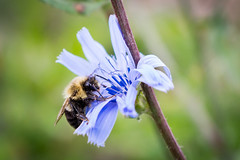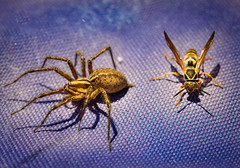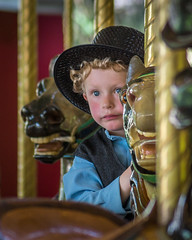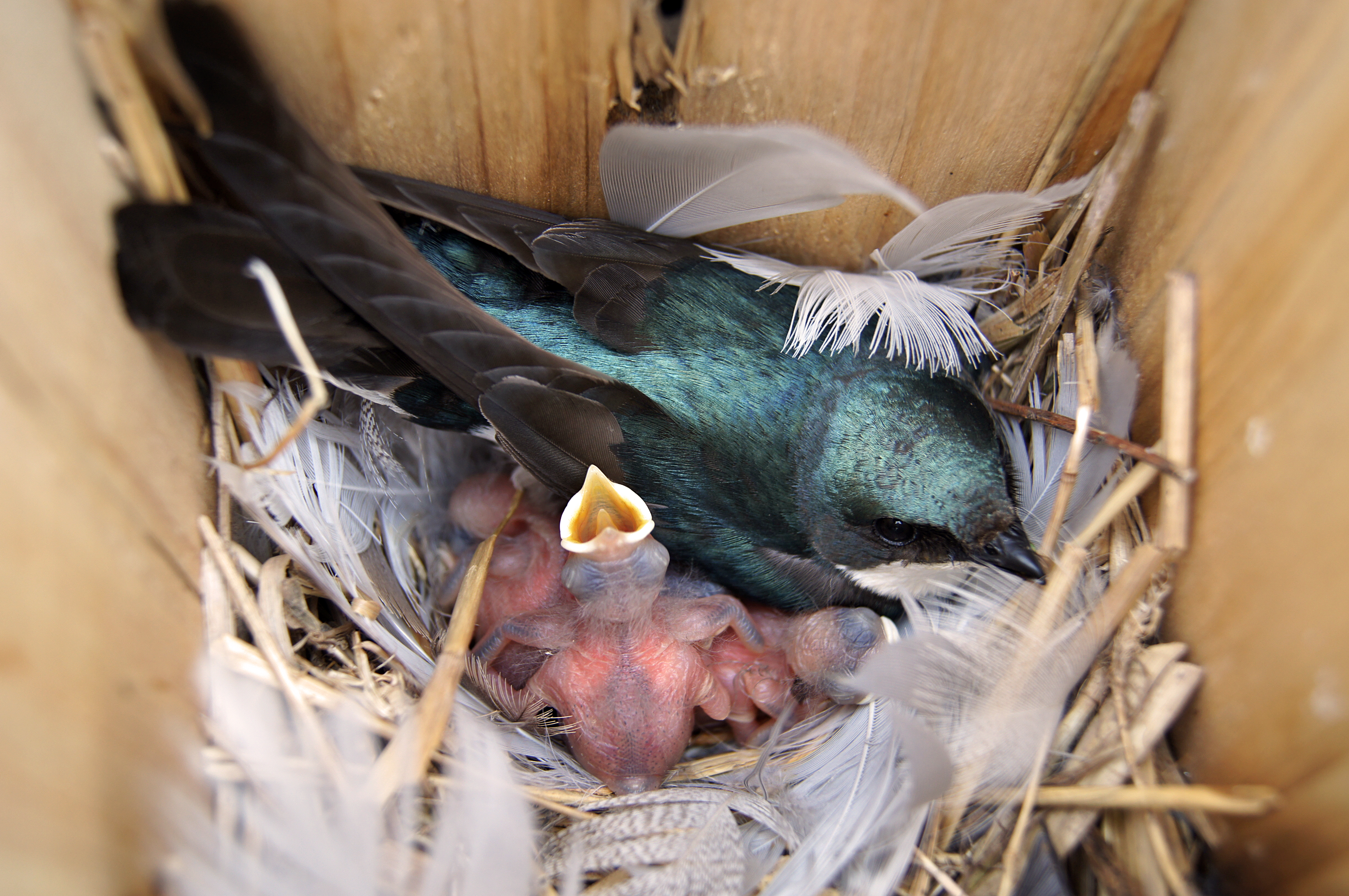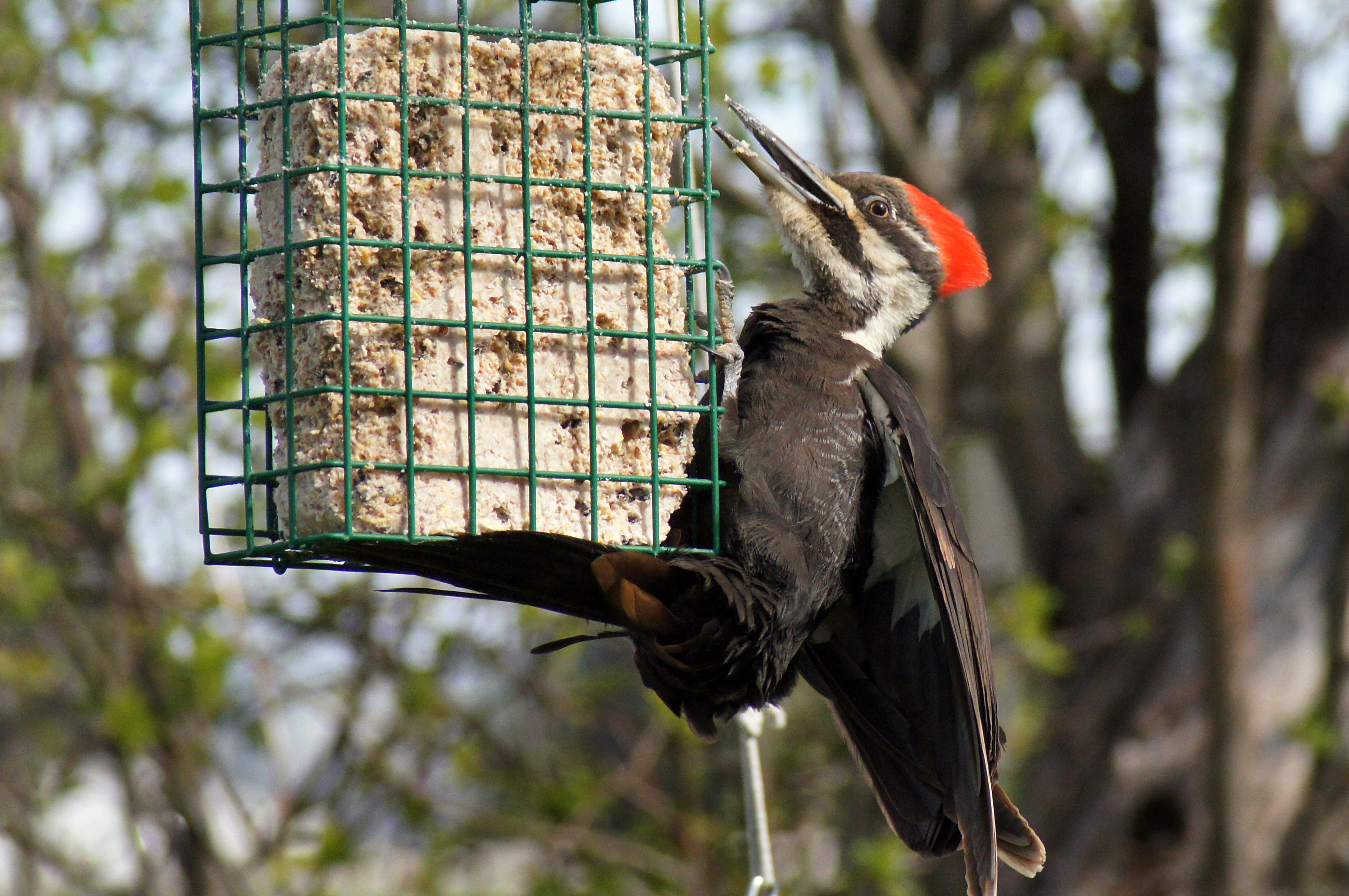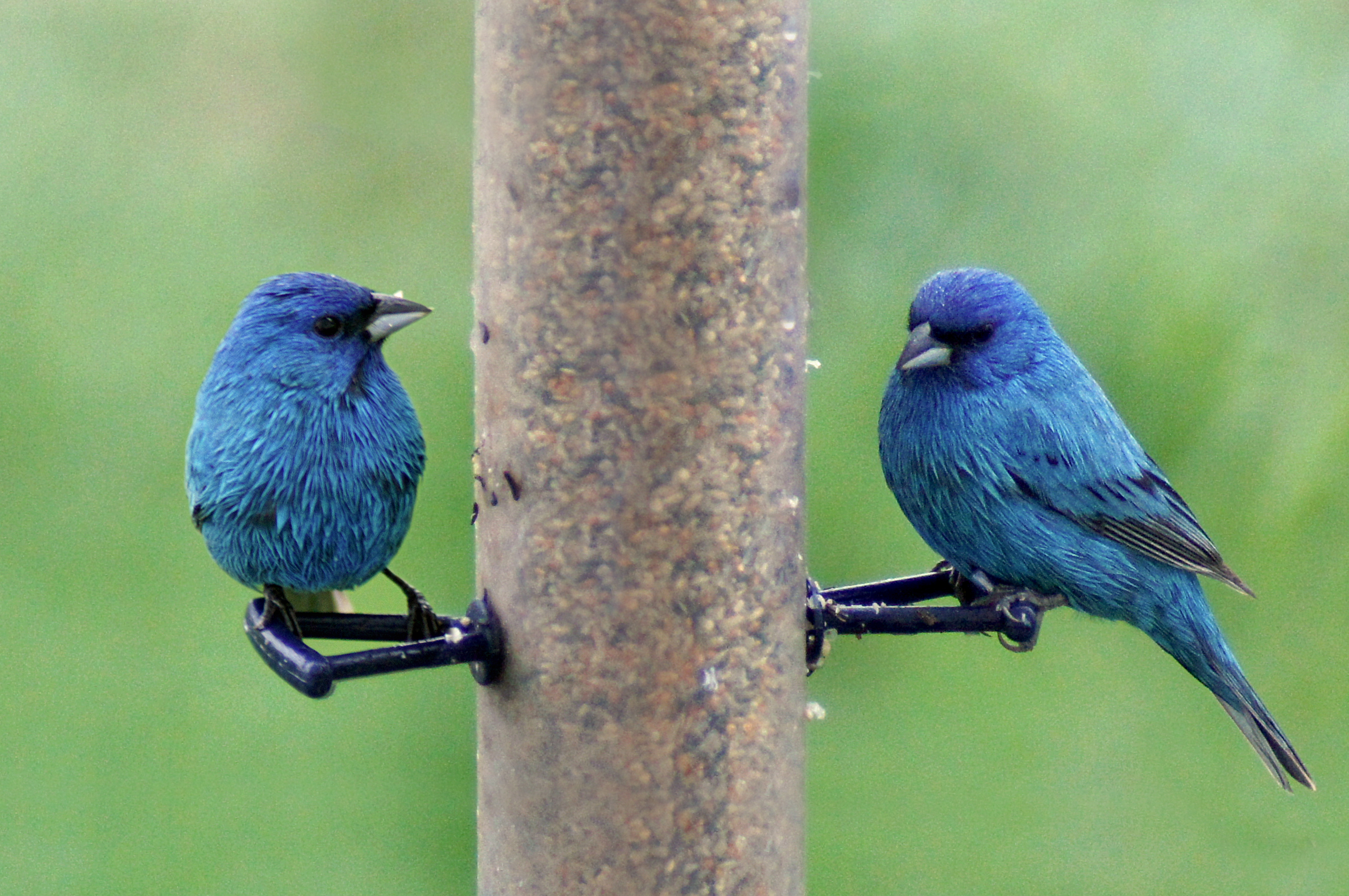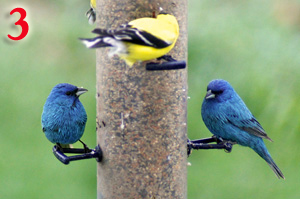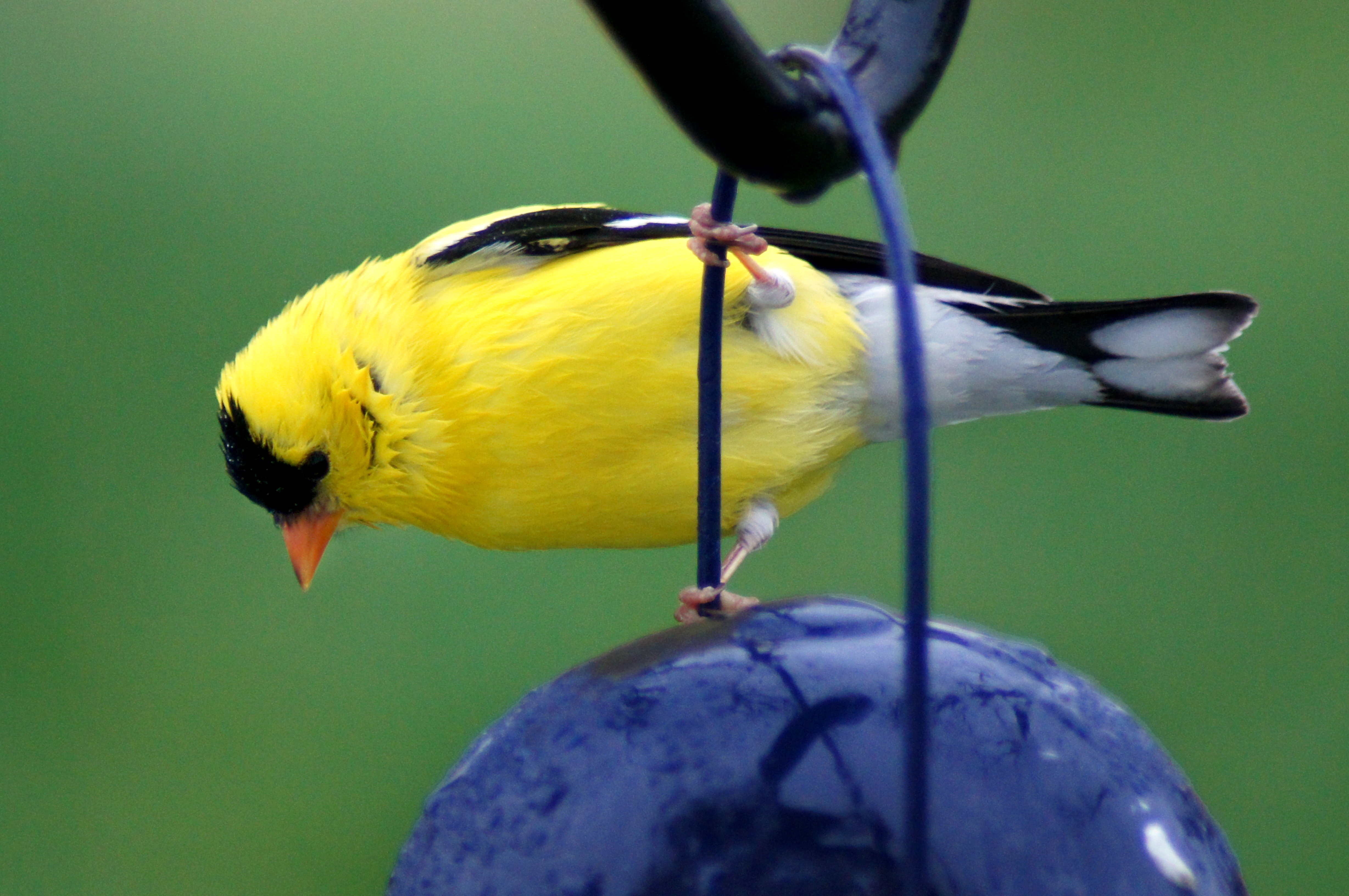Birds
Bluebird Trio
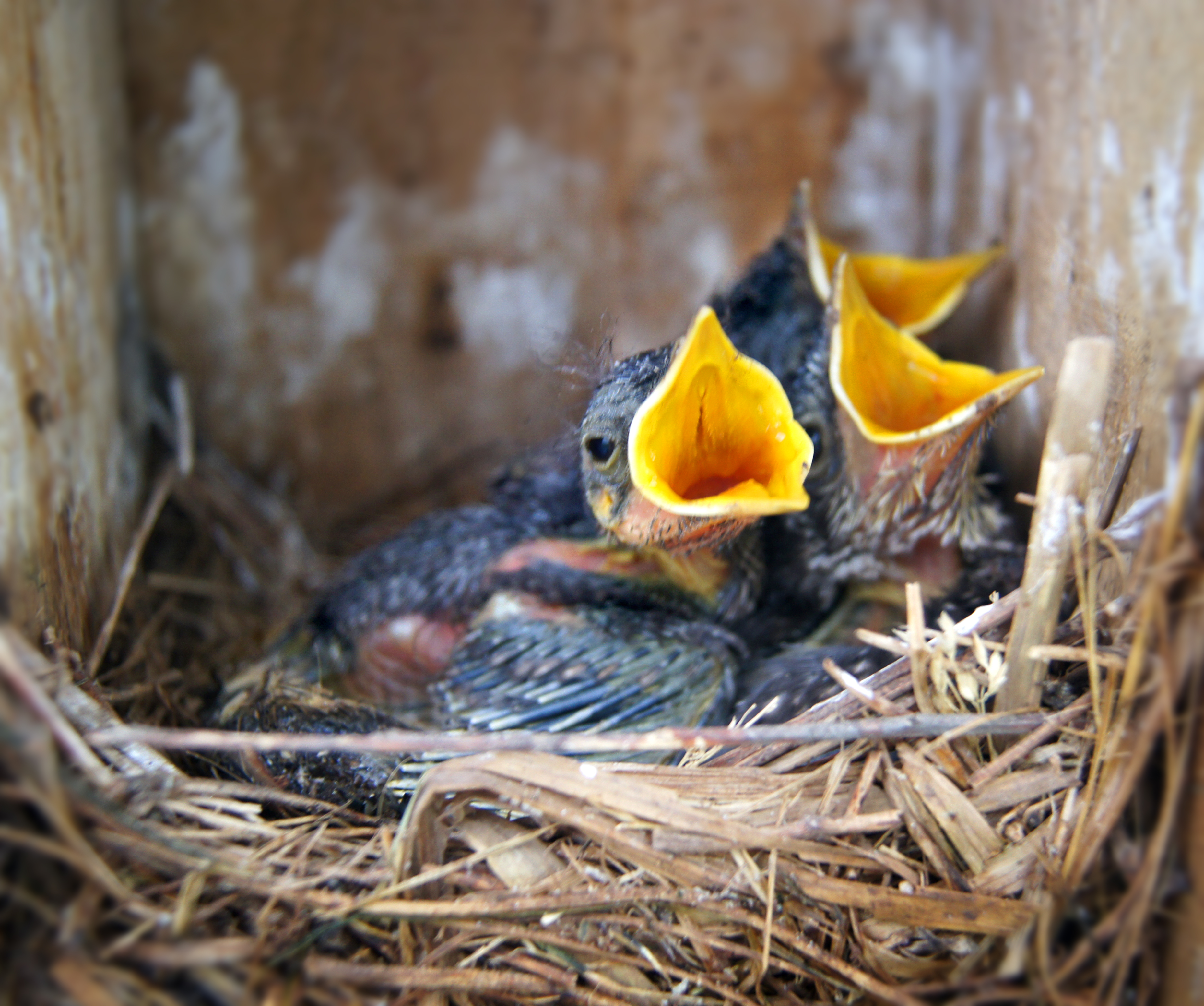
These blue birds look like their belting out a favorite song in three-part harmony. Actually, they are hoping someone will drop a worm or bug in their mouths. The wide open mouths are a response to a soft whistle from me. Even though I don’t sound anything like a blue bird, the whistle is close enough to make them think lunch is being served.
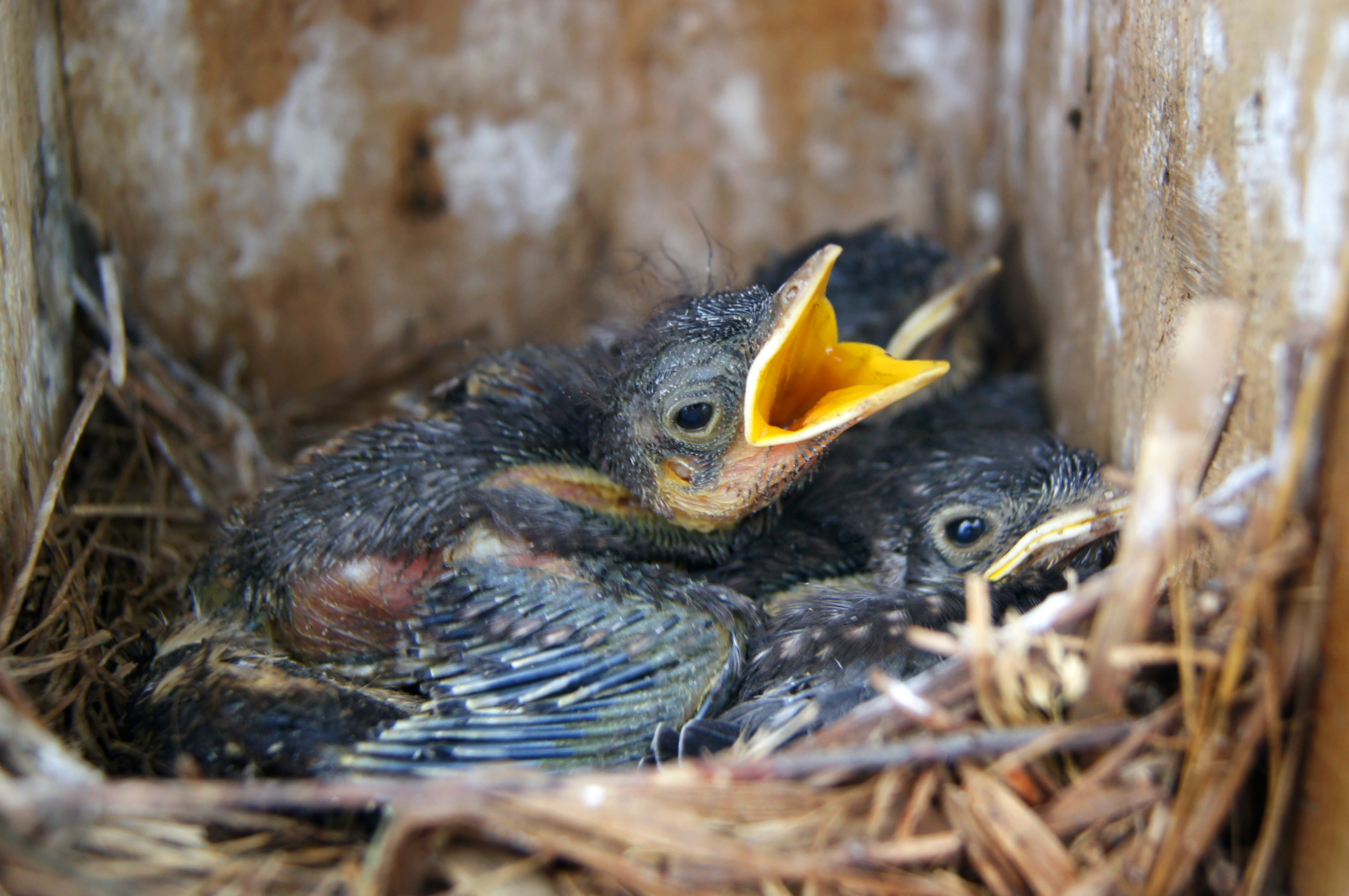 The smaller photo features the soloist of the family.
The smaller photo features the soloist of the family.
These blue birds are about a week old and progressing along nicely. However, not everyone in the brood has fared so well. Before the hatch I counted six eggs. It appears that four hatched and survived, but we found one of the four dead and removed it from the nest. (Surprised that the parents hadn’t removed it, since it had been dead for awhile and was smelling really bad.)
They have a couple of weeks to go before they are ready to take to the wing. It’s going to get very crowded in that little box by the time they fledge. There were five that survived to fledgling stage last year. That box was really crowded.
(Click on either image to see a larger version.)
Peeping Fresh
I looked to see how the birds nesting in the bird houses at our place were doing…and there were new babes. These are freshly hatched tree swallows – a few hours old, at most. You can see at least three that have hatched. The mother started with six eggs and is, no doubt, sitting on the still-to-be-hatched stragglers. In a few hours the hatch should be complete. Then the real work begins.
I also took pictures of the blue birds that are about a week old. Watch for photos of them soon.
(Click the photo to view a larger version.)
One Crazy, Swingin’ Red Head
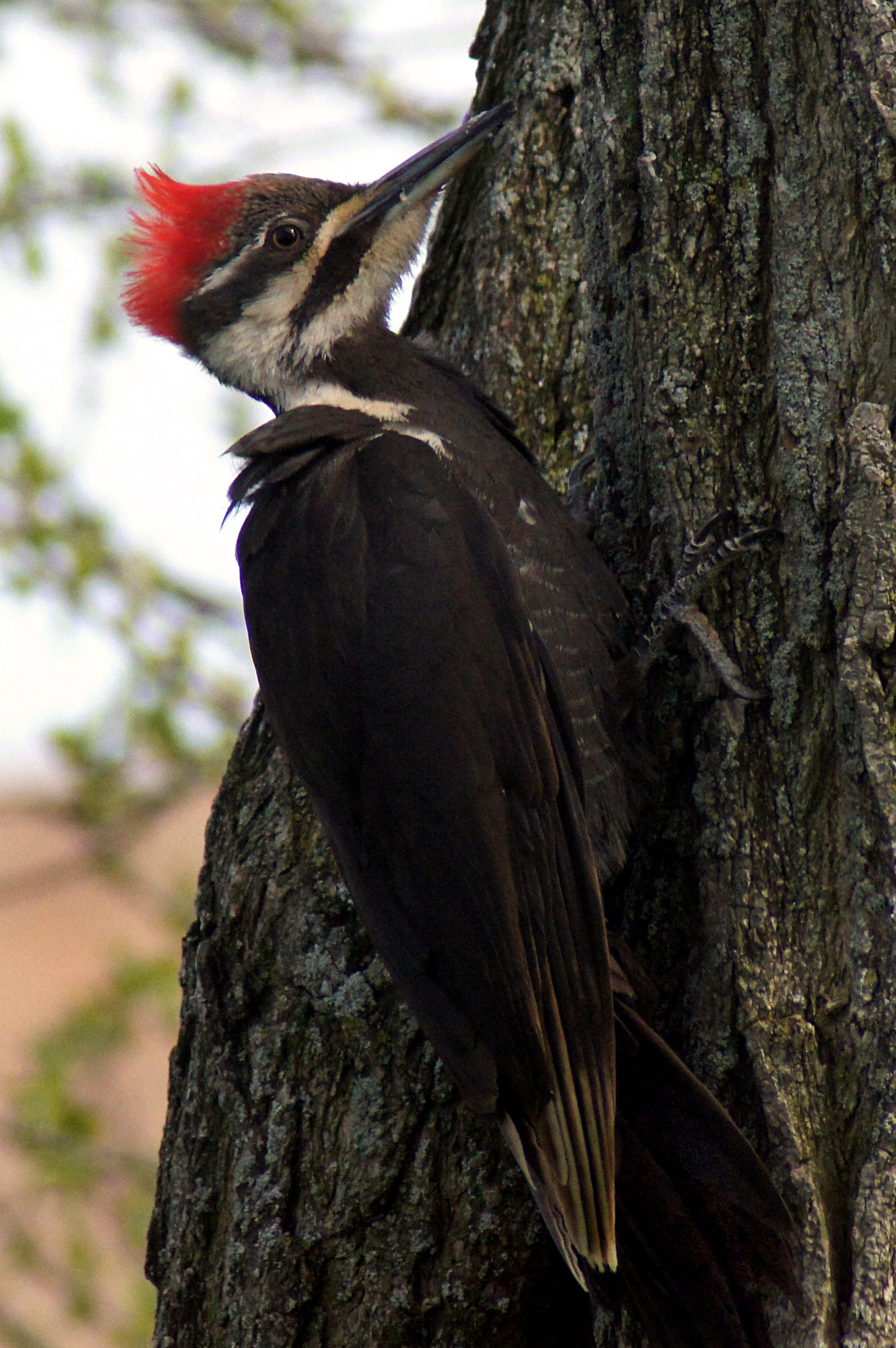 This is a Pileated Woodpecker. These birds are huge. It’s become a regular visitor to the jumbo suet feeder in our yard. The jumbo feeder is about 5 times the size of a normal suet feeder, and this bird makes it look small. The feeder hangs from a tree limb and acts like a swing when this big bruiser is hanging on.
This is a Pileated Woodpecker. These birds are huge. It’s become a regular visitor to the jumbo suet feeder in our yard. The jumbo feeder is about 5 times the size of a normal suet feeder, and this bird makes it look small. The feeder hangs from a tree limb and acts like a swing when this big bruiser is hanging on.
These are strange looking birds. It’s believed a Pileated’s red crest and sound was inspiration for the cartoon character Woody Woodpecker.
According to Wikipedia.org – – The Pileated Woodpecker (Dryocopus pileatus) is a very large North American woodpecker, almost crow sized, inhabiting deciduous forests in eastern North America, the Great Lakes, the boreal forests of Canada, and parts of the Pacific coast. It is also the largest woodpecker in America.
The call is a wild laugh, similar to the Northern Flicker. Its drumming can be very loud, often sounding like someone striking a tree with a hammer. This bird favors mature forests, but has adapted to use second-growth stands and heavily wooded parks as well.
(Click on an image to view a larger version.)
The Blues in Double Time
On a dreary, rainy spring morning I was delighted to see four Indigo Buntings flitting around the bird feeders in my yard. I started snapping pictures, hoping to get some good images. I was never able to catch an image of the Indigos together. The birds in this shot are actually the same bird – brought together with the magic of Photoshop.
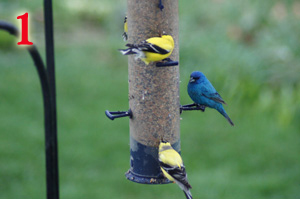 Most times I use Photoshop to tweak my photos – to crop, straighten, correct the color, etc. Some times I use it to create an entirely different image than what I started with. Here’s the basic process for this double Indigo image. Remember, all the Indigos in these images are the same bird, just captured in different locations.
Most times I use Photoshop to tweak my photos – to crop, straighten, correct the color, etc. Some times I use it to create an entirely different image than what I started with. Here’s the basic process for this double Indigo image. Remember, all the Indigos in these images are the same bird, just captured in different locations.
I started with photo 1. I straightened it, enlarged it and cropped it. I also did a little work to clean up some of the white spots of bird poop on the side of the feeder that you don’t notice on the small version but would be ugly when enlarged.
Time to add another Indigo Bunting to the image. I isolated the Indigo Bunting on his perch from photo 2 and copied and pasted it to photo 1. I had to scale the second bird to proper proportions and overlay it over the perch on the opposite side of the first bird. Then I cropped it to the image you see as photo 3.
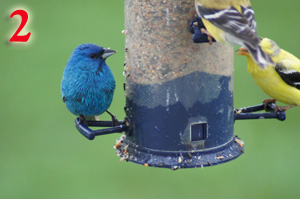
Looking at photo 3, I decided that the Goldfinches were a distraction, so I removed them by cloning parts of the feeder and surrounding background over them.
Things were looking pretty good, but I decided that the image was wider than I really wanted. To change it’s overall proportions I narrowed the feeder, bringing the birds closer together.
After tweaking the contrast and sharpness the project was complete. I hope you like it.
A few days later it dawned on me – I could have created an image with the feeder full of Indigo Buntings. Maybe I’ll work on that when I’m stuck in the house on a cold winter’s day, wishing I could be out photographing birds.
(Click on the main image for a larger view.)
Water Wings
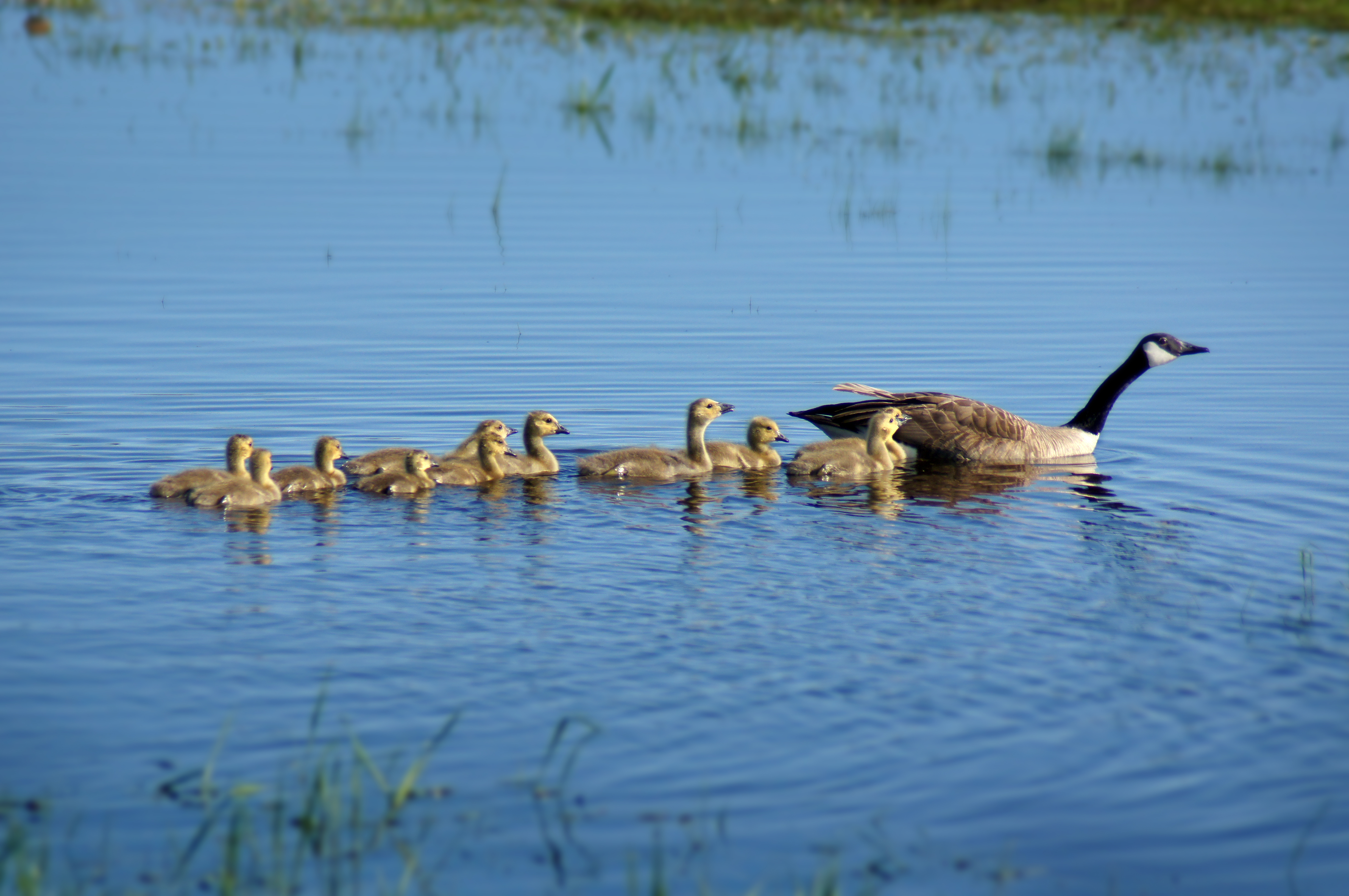
I took this photo at a small wetland area on my drive home. They were closer and on dry ground when I drove up, but as soon as the mama spotted me, she took the kids for a safe swim.
Canada Geese have become so prolific they are often considered a nuisance…but how can you not love the goslings. I counted 11 little ones in this brood.
(Click the image to view a larger version.)
The Flip Side
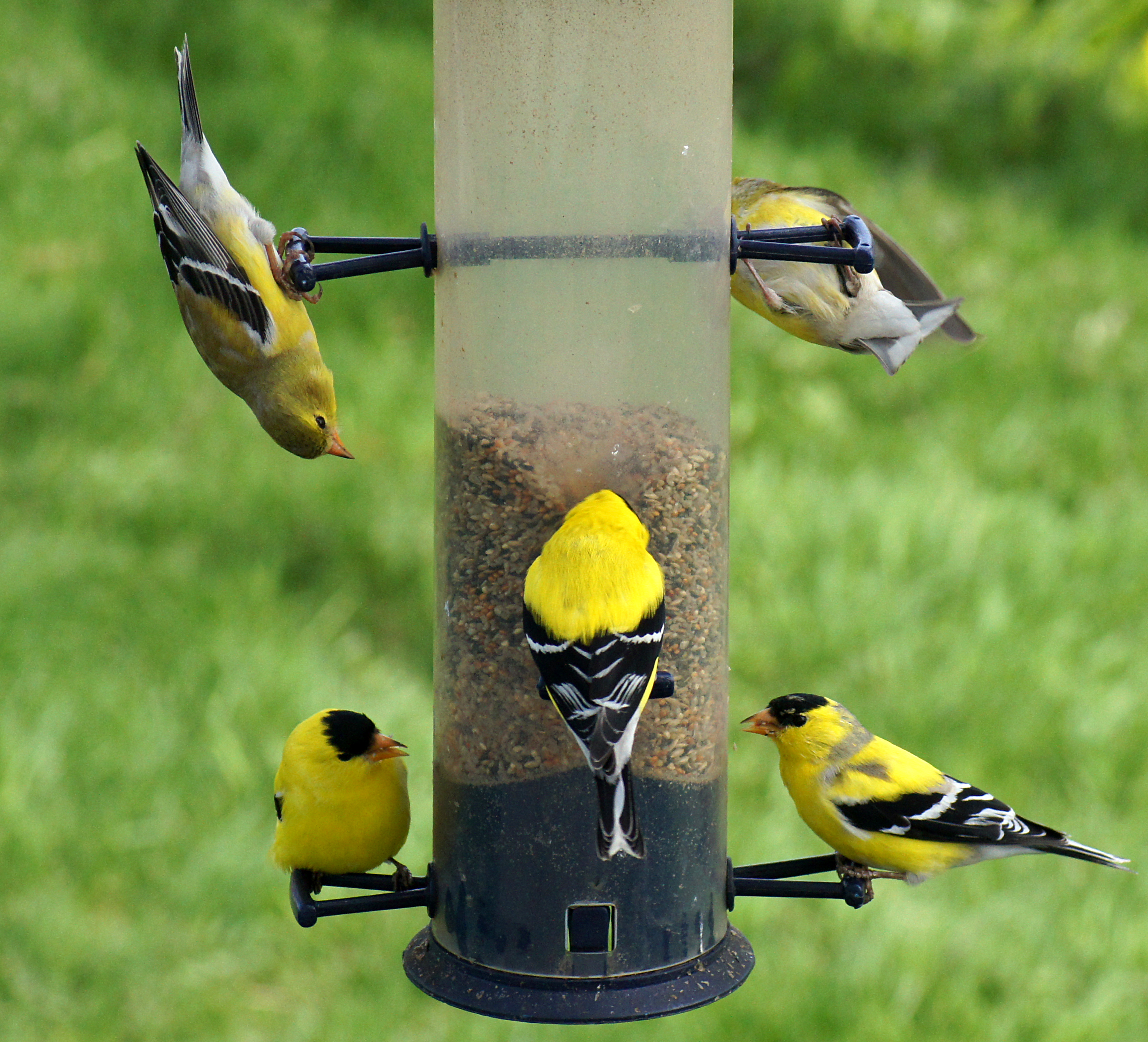
Those acrobatic clowns from our “Flying Circus” never cease to entertain and amaze.
As the seed level drops in the feeders, the level of creativity and persistence among the American Goldfinch community rises.
The zany, upside-down bird makes this an image worth posting, but I also find the white pattern on the wings of the bird in the middle interesting.
(Click the photo to view a larger version.)
Oriole

“I just flew in from Baltimore…and boy are my wings tired!”
We have a few orioles that show up this time of year. They like the oranges we put out. This guy still has a little orange stuck to his beak.
According to Wikipedia.org – – The Baltimore Oriole (Icterus galbula) is a small icterid blackbird that averages 18 cm long and weighs 34 g. This bird received its name from the fact that the male’s colors resemble those on the coat-of-arms of Lord Baltimore.
Adults have a pointed bill and white bars on the wings. The adult male is orange on the underparts, shoulder patch and rump. All of the rest of the male is black. The adult female is yellow-brown on the upper parts with darker wings, and dull orange on the breast and belly.
The Baltimore Oriole’s nest is a tightly woven pouch located on the end of a branch, hanging down on the underside.
Baltimore Orioles forage in trees and shrubs, also making short flights to catch insects. They mainly eat insects, berries and nectar, and are often seen sipping at hummingbird feeders. Oriole feeders contain essentially the same food as hummingbird feeders, but are designed for orioles, and are orange instead of red and have larger perches. Baltimore Orioles are also fond of halved oranges and grape jelly.
(Click the photo to see a larger version.)
Flying Circus
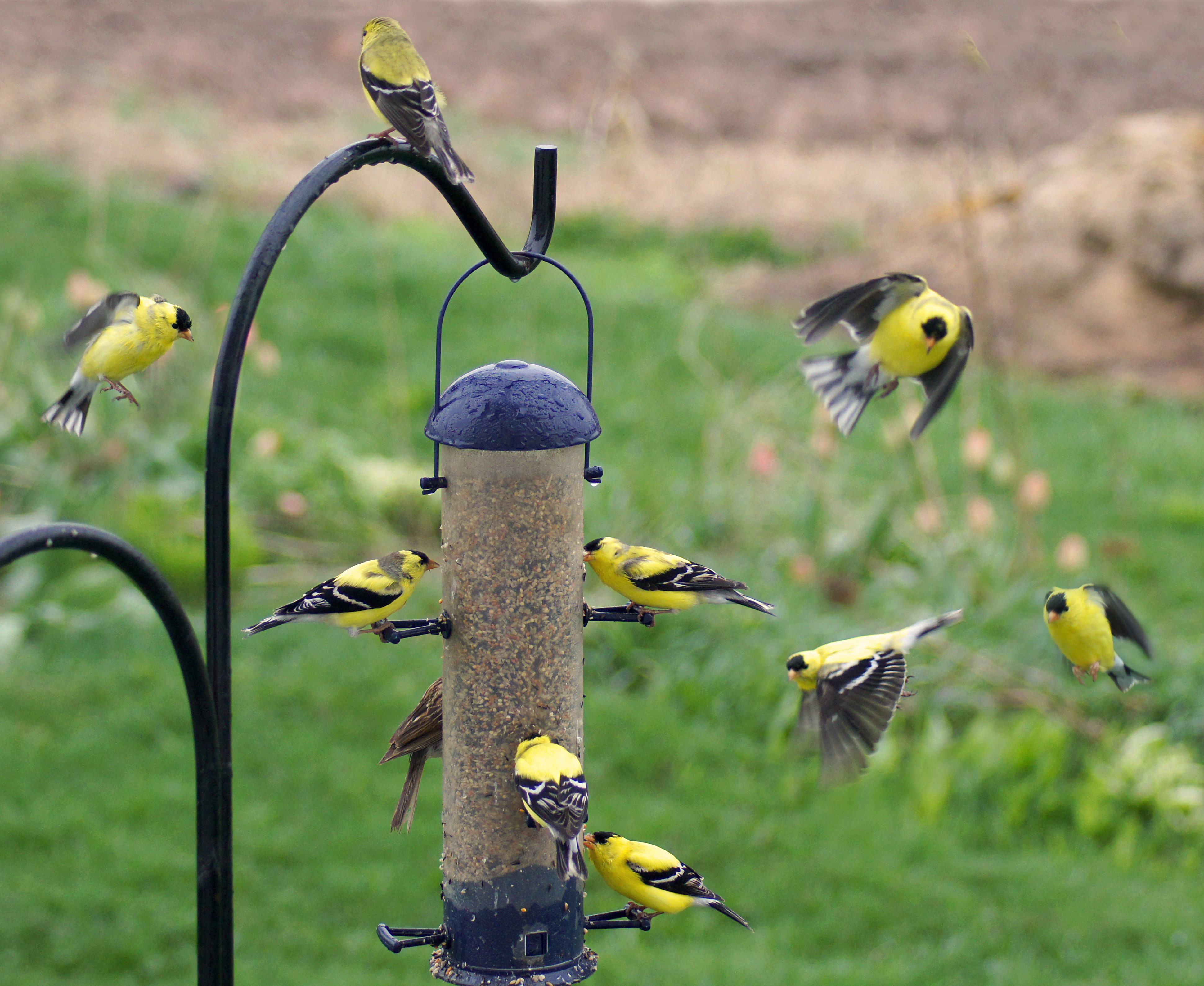 There are times when I look out the window of our rural home and think, “What a circus!” Birds are flying in every direction to take advantage of a free meal from one of our many feeders.
There are times when I look out the window of our rural home and think, “What a circus!” Birds are flying in every direction to take advantage of a free meal from one of our many feeders.
Of all the birds we see, the American Goldfinches are among the most active and consistent performers at our house. It can be quite entertaining to watch them zipping in and out; hither and yon.
When frozen by the camera, the Goldfinch’s quick, bouncy style of flight seems unnatural and awkward.
All of the birds in this photo are American Goldfinches – except the one Chipping Sparrow whose tail can bee seen as he perches on the back side of the feeder.
(Click the image for a larger version.)
Bottom View
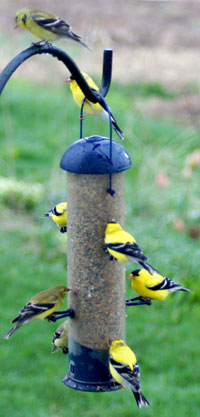 This American Goldfinch (male) was hanging on the top of the finch feeder, waiting for an opening on one of the perches below. As you can see, it’s a popular neighborhood dining spot.
This American Goldfinch (male) was hanging on the top of the finch feeder, waiting for an opening on one of the perches below. As you can see, it’s a popular neighborhood dining spot.
This image was taken on a drab and drizzly day, so you’ll notice his feathers appear a bit damp.
There is no shortage of Goldfinches at our house – year round. (Might have something to do with the food we put out.) It’s nice to see them back in their bright yellow and black plumage for the spring and summer.
(Click on the main image for a larger view.)
Bluebird Hatch
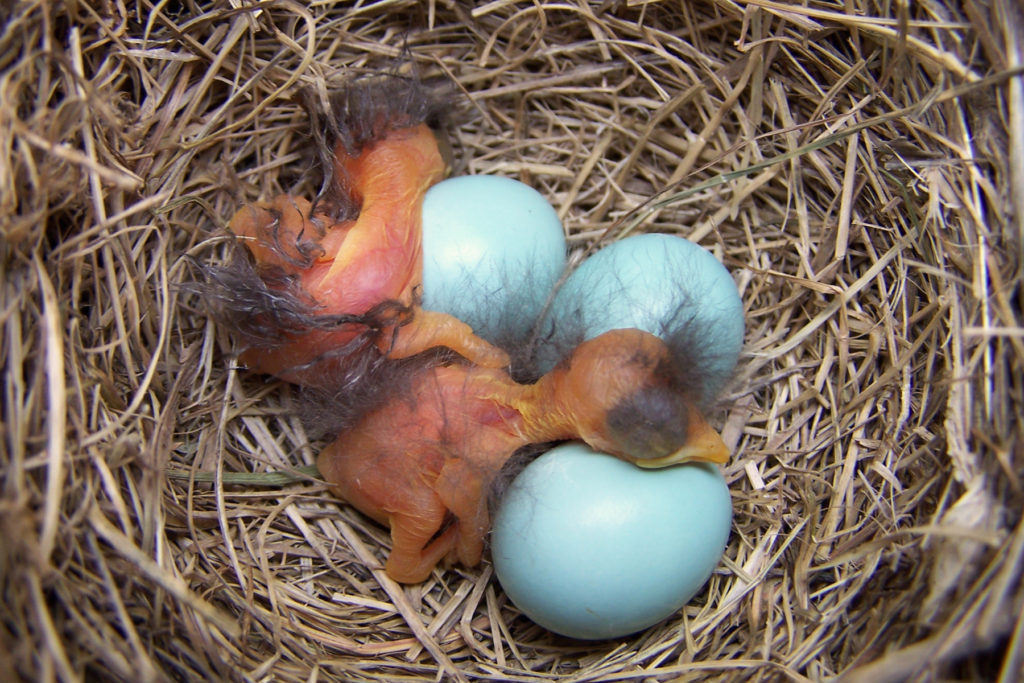
Just hours old, these bluebirds are waiting for their siblings to hatch. All of them successfully hatched and fledged.
I shot this by lifting the top off the bluebird house and shooting straight down with my Kodak Easyshare DX7590. This photo was taken in early June of 2010.
(Click the image to see a larger version.)
All of the photos I post are available for purchase. If you’d like to buy one, click on the blue “Buy this Online” bar below for a variety of print and frame options or contact me for digital purchase and licensing options.






